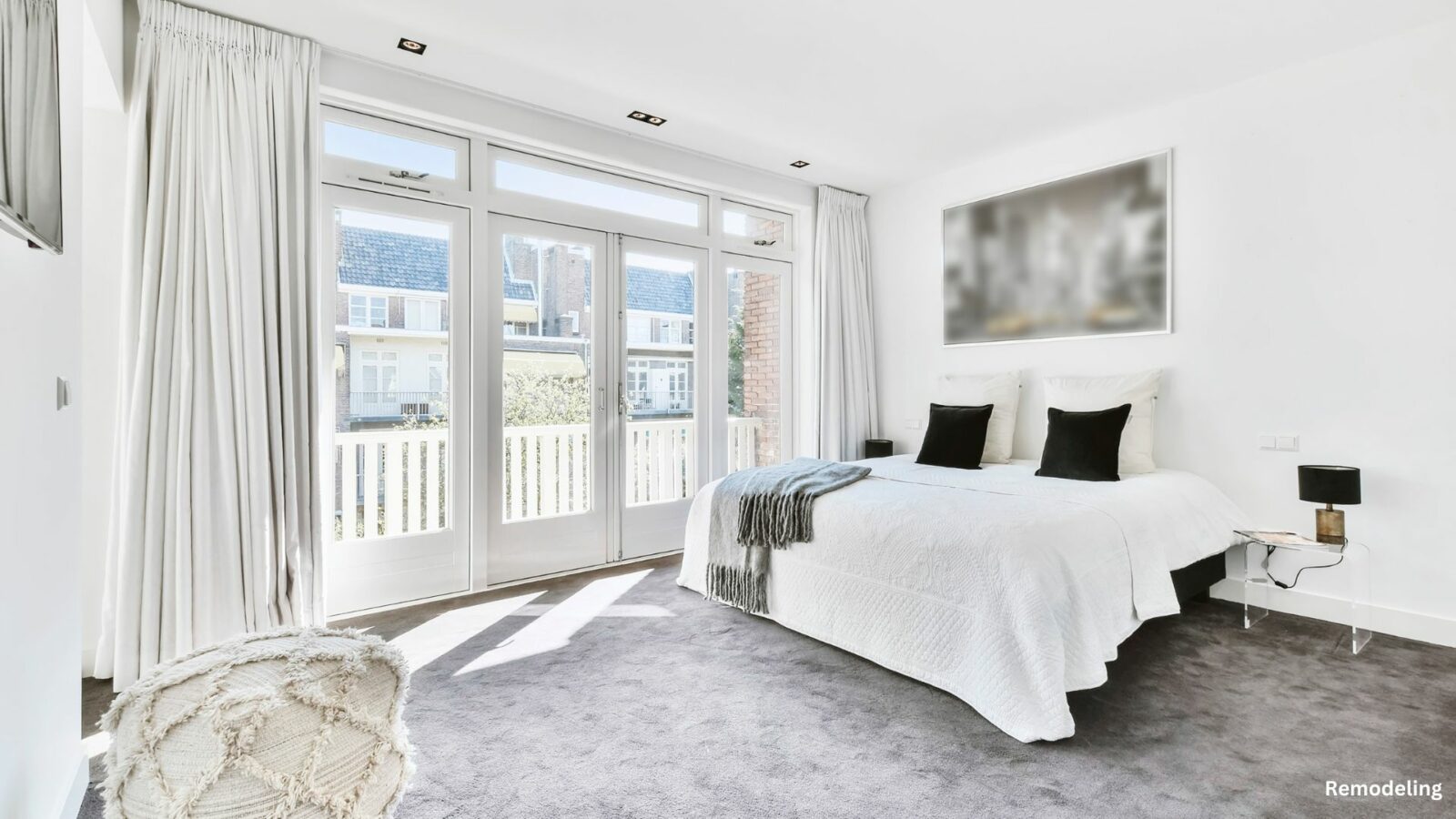For an average-sized room of about 200 square feet, the cost to install carpet can range from:
- Low-end: $400 to $1,000
- Mid-range: $1,000 to $2,000
- High-end: $2,000 to $4,000 or more
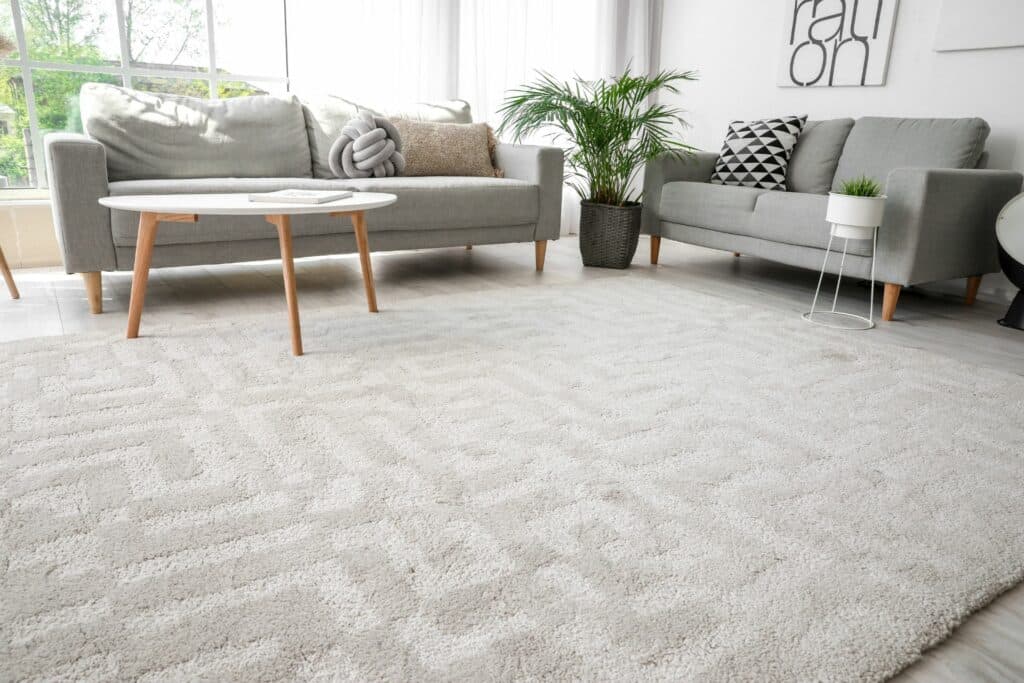
There exists a diverse selection of carpet colors and types, allowing you to infuse various styles and personalities into your living space. Ranging from affordable nylon to luxurious wool, there’s a carpeting option to suit every budget and lifestyle. The addition of new carpet can quickly rejuvenate a room, offering a fresh update in just a matter of hours.
Carpet Installation Cost per Square Foot
The most significant factor affecting your overall budget is the square footage. Installing carpet throughout your home can range from $1 to $10+ per square foot, with variations depending on the material type and any unexpected challenges that may arise during installation.
- Carpet Material and Quality:
- Low-end carpet: $1 to $2 per square foot
- Mid-range carpet: $2 to $5 per square foot
- High-end carpet: $5 to $10+ per square foot
- Padding:
- Basic padding: $0.30 to $0.60 per square foot
- Better quality padding: $0.60 to $1 per square foot
- High-end padding: $1 to $2 per square foot
- Installation Costs:
- Basic installation: $0.50 to $1 per square foot
- Removal of old carpet: $0.25 to $1 per square foot
- Moving furniture: $0.20 to $0.50 per square foot
Average Cost of Carpet by Material
While size is a significant cost factor, the choice of materials plays a close second. Carpeting comes in various styles, each crafted from distinct materials that influence pricing. Some materials involve higher manufacturing costs, which are reflected in the price, while others may require longer installation times. Here are the primary carpet material types and their associated costs:
Polyester

This synthetic option is favored for its affordability, typically ranging from $1 to $3 per square foot. Homeowners are drawn to polyester not only for its cost-effectiveness but also for its non-allergenic properties, resistance to mold and mildew, and appealing color options. However, the quality can vary widely among manufacturers, and low-density polyester carpeting is prone to tracking and crushing, making it less suitable for high-traffic areas.
Wool
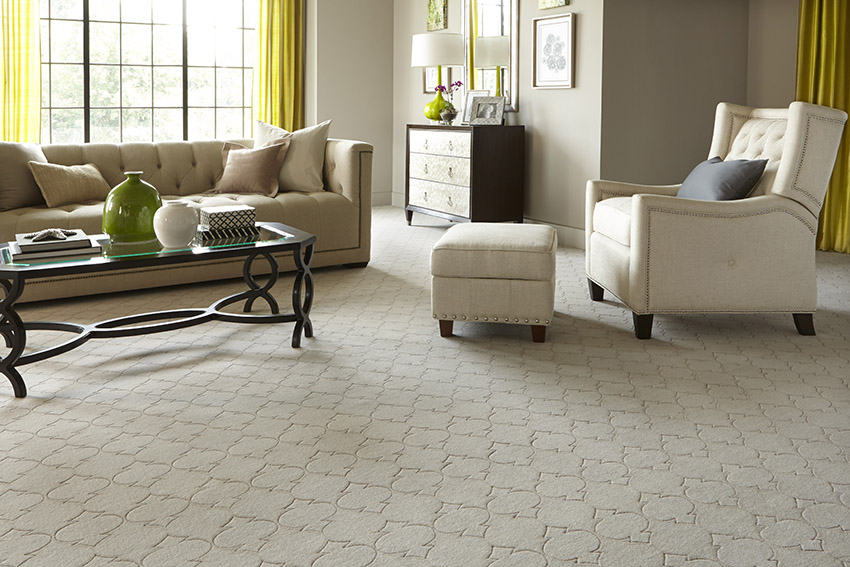
Wool is a luxurious natural material with a corresponding higher price tag, typically falling between $5 to $15 per square foot. Wool, including sub-styles like Berber, is known for its eco-friendliness, durability, stain resistance, and attractive appearance and texture. While wool is a natural choice for environmentally conscious individuals, it can be susceptible to moisture-related issues such as mold and mildew. It may also develop fading and static problems with heavy use, making it less suitable for basements but still viable for high-traffic areas.
Nylon

Nylon, a budget-friendly material ranging from $2 to $5 per square foot, boasts durability and resistance to heavy foot traffic. Nylon carpeting is easy to clean, resists pilling with frequent use, and can be installed in various locations, including high-traffic areas and even outdoor spaces. While lacking the luxurious look and feel of other materials like wool, nylon excels in terms of durability and stain resistance, making it suitable for homes with kids and pets.
Olefin (Polypropylene)
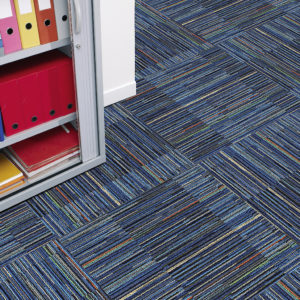
Olefin, also known as polypropylene, is a cost-effective carpeting option, typically priced between $1 and $3 per square foot. This material is often manufactured using recycled materials, including common plastics. Olefin carpets are durable, stain-resistant, and moisture-resistant. They also resist sun-fading, making them ideal for various parts of the home. However, olefin is susceptible to damage from friction, so caution should be exercised when moving large furniture items across it.
Acrylic
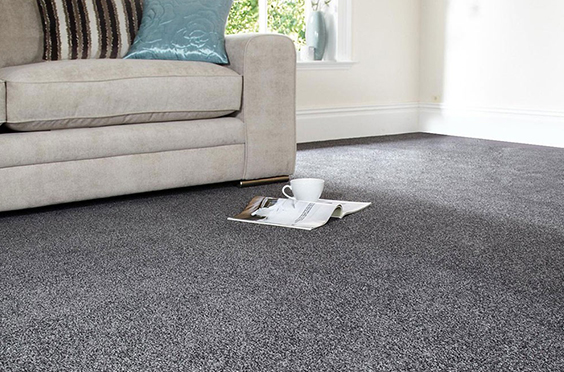
Acrylic carpeting, though less common in recent years, remains a viable choice for many homes. It typically costs between $3 and $8 per square foot and is known for being hypoallergenic despite being a synthetic fiber. Another advantage is that carpet-eating moths dislike acrylic carpeting. However, acrylic carpets are prone to pilling, have a shorter lifespan, and lack stain resistance, necessitating the use of robust cleaning agents.
Cotton

Traditional cotton carpet, priced at $3 to $7 per square foot, offers extreme softness and comfort. It has low levels of volatile organic compounds (VOCs), making it a suitable choice for those concerned about potentially harmful chemicals in the home. However, like cotton garments, this type of carpet is vulnerable to staining and fading, particularly in rooms with direct sunlight exposure.
Triexta

Triexta is a specialized type of polyester carpet that costs between $3 and $8 per square foot. The higher cost compared to traditional polyester is attributed to Triexta’s eco-friendliness, with 30 to 40 percent of the material derived from corn glucose. Triexta carpeting is stain-resistant, crush-resistant, and resistant to mold and mildew. However, it requires annual steam cleanings to maintain its condition.
Cost of Carpet Installation by Type
Beyond material variations, carpeting is available in various types, each contributing to the overall installation cost to varying degrees. Here are some carpet types, along with their potential impact on installation expenses:
Textured
Textured carpet undergoes a cutting and looping process to ensure uniform strand height and end weaving, giving it a distinct appearance. The cost of textured carpeting typically ranges from $1 to $12 per square foot, depending on the construction materials used. This even construction helps textured carpet resist indentations from heavy furniture and facilitates easy cleaning. However, poorly constructed textured carpet can be prone to snagging, and untreated textured carpet may not provide fire resistance. Additionally, some types of textured carpeting are hypoallergenic, but not all, so research is advisable before purchase.
Patterned
For those seeking a unique carpet scheme reminiscent of a fine rug, patterned carpeting offers an appealing option. The cost of patterned carpeting typically falls between $2 and $6 per square foot, depending on the underlying materials. Patterned carpets feature embossed patterns ranging from traditional aesthetics to bold abstract designs. They often incorporate multiple fiber types and loop styles within a single roll, sheet, or tile.
Berber
Engineered berber carpet, also known as loop-style carpeting, is usually crafted from wool or nylon and costs between $3 and $20 per square foot, depending on the materials and additional design features. Berber carpeting consists of short, thick loops, creating a distinct “tight” appearance. This type of carpeting is exceptionally durable, making it a suitable choice for basements. It is easy to clean but challenging to repair in the event of tears or snags. Additionally, berber carpeting may feel somewhat rough compared to other types.
Additional Factors Impacting Carpet Installation Costs
While carpeting, padding, and labor constitute the majority of your expenses, several other factors deserve consideration.
Removing Old Carpeting
The process of removing old carpeting costs $1 to $1.50 per square foot, encompassing labor, waste disposal, and cleanup. This step is essential when replacing old carpeting. Certain projects may require floor removal to accommodate the new carpet, with costs ranging from $1 to $3 per square foot, depending on the type of flooring. Some installers may include these costs in their overall estimate.
Subfloor Preparation and Repairs
Before installing carpeting, the subfloor must be in optimal condition, which may necessitate preparation or, in some cases, repairs or replacement. Preparation involves a thorough inspection, deep cleaning, adequate drying, and general maintenance tasks like staple or nail removal, floor leveling, and baseboard painting. Repairing damaged or aged subflooring costs an average of $600, depending on the extent and size of the affected area. Subfloor replacement ranges from $3 to $10 per square foot.
Custom Cut Carpets
Irregularly shaped rooms may require custom-cut carpeting, involving additional materials and time. The cost varies based on room size and shape, but expect an extra $1 to $2 per square foot for custom cuts. These additional costs apply only to the necessary areas, not the entire project.
Stain Resistant Treatments
While some materials naturally resist stains, others benefit from stain-resistant treatments. Purchasing stain-resistant treatment chemicals is cost-effective, at approximately $80 for 1,000 square feet. However, this process increases overall labor costs. Most professionals charge a flat fee for stain-resistant treatments, regardless of the space’s size. Consult your carpet installer for specific details.
How Much Does It Cost to Install Carpet Yourself?
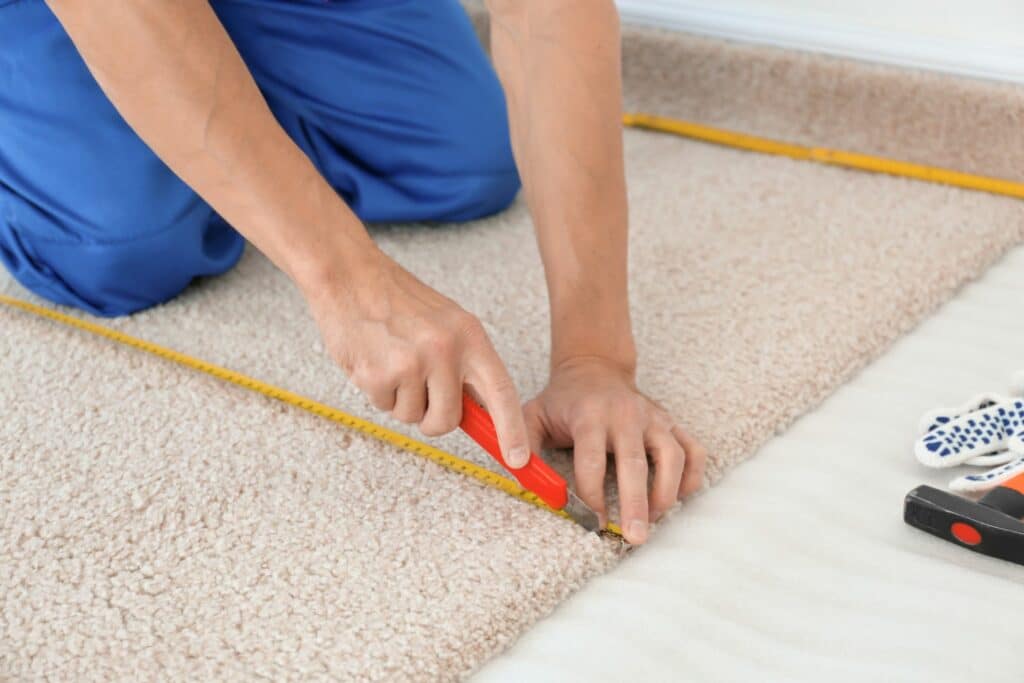
Before opting for a DIY carpet installation, check if it will void the manufacturer’s warranty, as many companies do not cover self-installed carpets.
If you lack experience in carpet installation, bear in mind that it requires specific skills and tools. For instance, using a knee kicker is not straightforward and is exclusively designed for carpet installation. If you intend to tackle the installation yourself, these scenarios are more suitable, especially for beginners:
- You are familiar with the necessary tools or can receive guidance on their use.
- The installation is limited to a single room, preferably one with low traffic, such as a guest room.
- The installation is relatively straightforward, without floor vents, stairs, complex cuts, corners, or irregularities.
Additionally, consider disposal arrangements for old carpet, remnants, and leftover pieces resulting from the installation process.
| Tools and Supplies | Cost |
|---|---|
| Tack strip cutter | $4 – $29 |
| Hand stapler | $30 – $50 |
| Wall trimmer | $30 – $130 |
| Top cutter | $25 – $55 |
| Hammer | $7 – $37 |
| Measuring tape | $4 – $29 |
| Knee kicker | $32 – $165 |
| Carpet knife | $12 – $16 |
| Stair tool | $20 |
| Razor knife | $2 – $8 |
| Power stretcher | $170 – $480 |
| Gloves | $8 – $13 |
| Carpet | $1 – $20 per sq. ft. |
| Tack strip | $27 per piece |
| Tape | $5 – $10 |
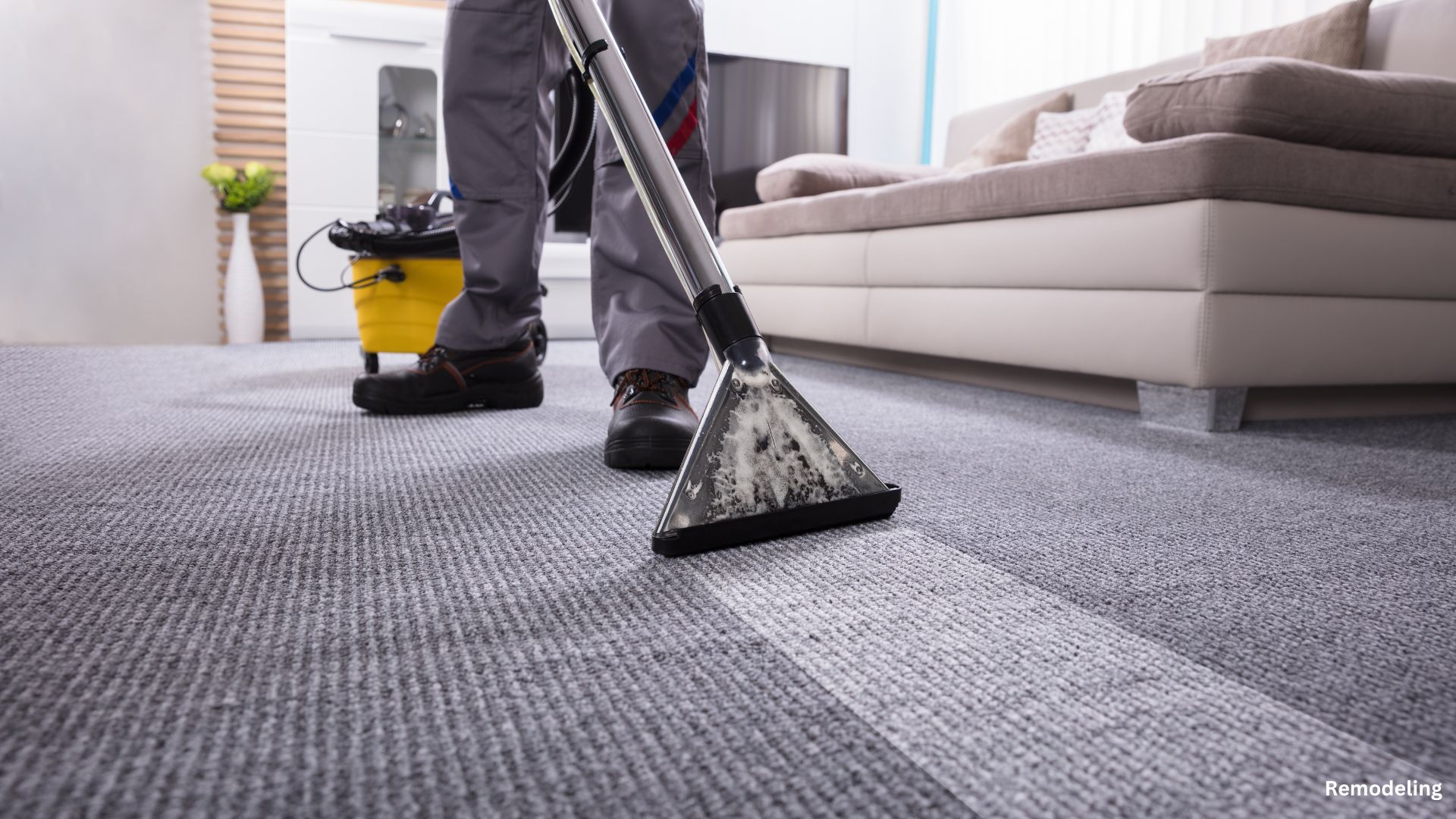
Installing carpet in your home can be a cost-effective way to add comfort and warmth to your living spaces. For an average-sized room of about 200 square feet, the total cost can range from $400 to $1,000 for low-end installations, $1,000 to $2,000 for mid-range, and $2,000 to $4,000 or more for high-end options.
Carpet installation costs also depend on the type and quality of the carpet, as well as additional factors such as padding, subfloor preparation, and custom cuts. Whether you opt for a basic synthetic carpet or a premium natural fiber, there is a wide selection available to suit various budgets and styles. Professional installation ensures a smooth, durable finish, but DIY enthusiasts can also take on the project with the right tools and preparation.
Ultimately, investing in new carpet can quickly rejuvenate a room, offering a fresh update and enhancing the overall aesthetic and comfort of your home.
Related posts:
No related posts.
